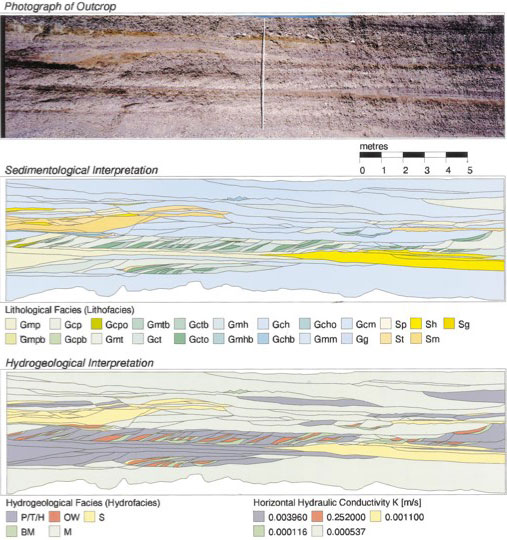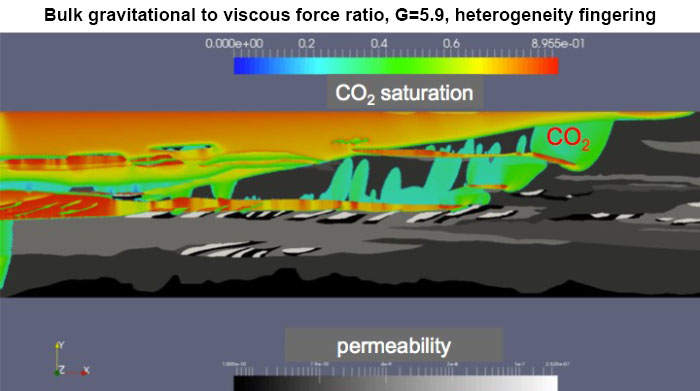Quantifying CO2 trapping mechanisms and capacity in open saline aquifers
The role of reservoir heterogeneity
Collaborative research project involving the Peter Cook Centre, University of Melbourne with Benson lab, Stanford University, and Department of Earth Sciences, Cambridge University.
Transport, geochemical processes and the associated CO2 trapping mechanisms in geological reservoirs are highly dependent on the nature of structural and lithological heterogeneities. However, important cm‐ to meter scale heterogeneities are not incorporated into storage complex models because they can neither be seismically imaged nor represented by grid cells. This project will determine capillary, dissolution and mineral trapping over time for open and closed saline aquifers accounting for such heterogeneities. A series of coordinated process studies using experimental, analytical and numeric approaches are carried out with the aim to estimate the proportion of CO2 trapping by the different mechanisms over time. The CO2CRC Otway and the SaskPower Aquistore sites serve as case studies where detailed geological information is available. Ultimately, the project aims to advance the conceptual representation of CO2 trapping over time in saline aquifers (IPCC, 2005, Fig. 2) to a quantitative representation based on our case studies.
Figures: Heterogeneity of gravel-sand deposits of a river and its potential impact on plume spreading in CO2-geostorage complex.

Face of a gravel-pit mapped by Klingbeil et al (1999, Sed Geol)

CO2 injection simulation with unstructured grid hybrid FE-C-FVM simulator (BazrAfkan et al, 2014).